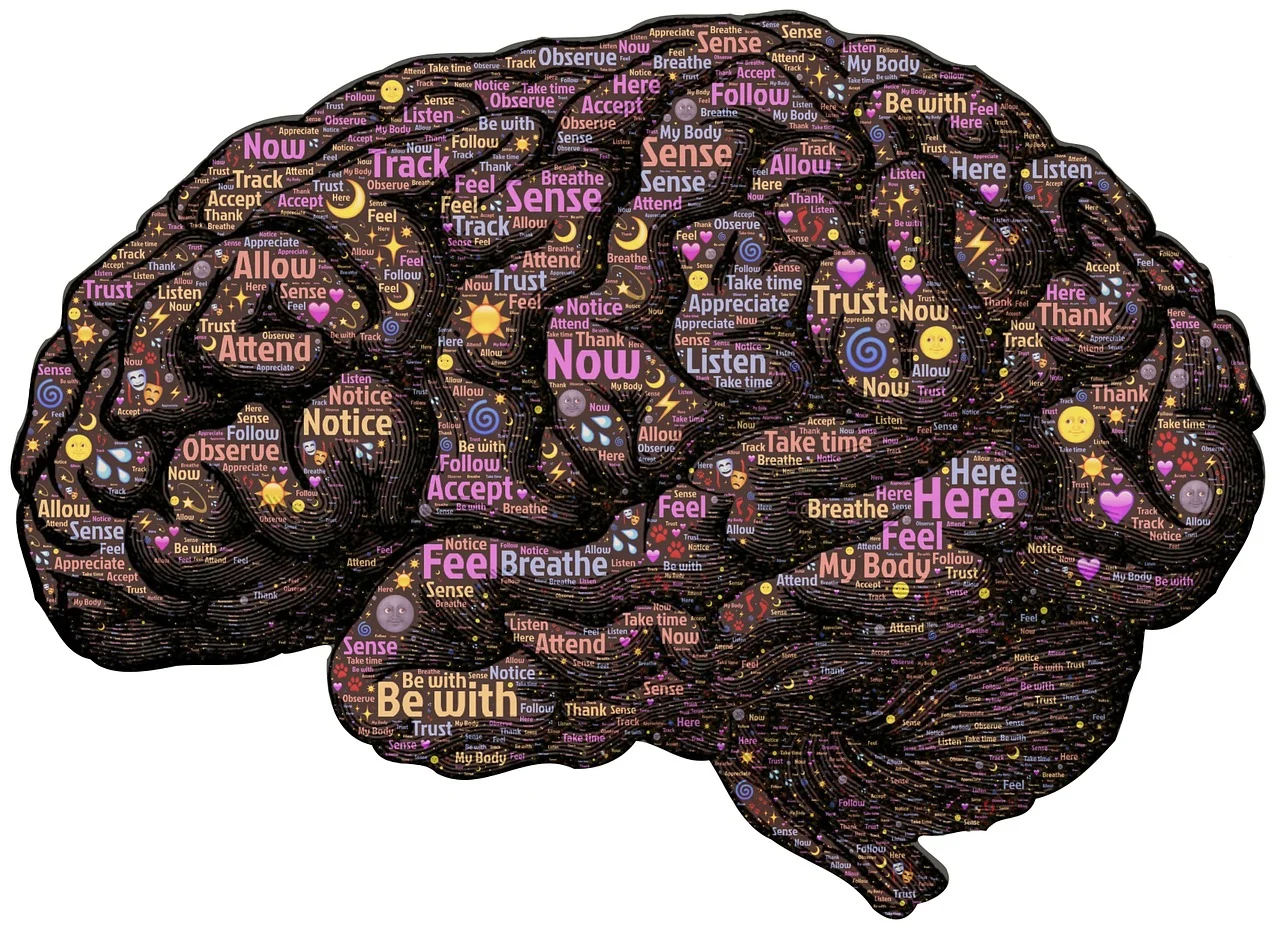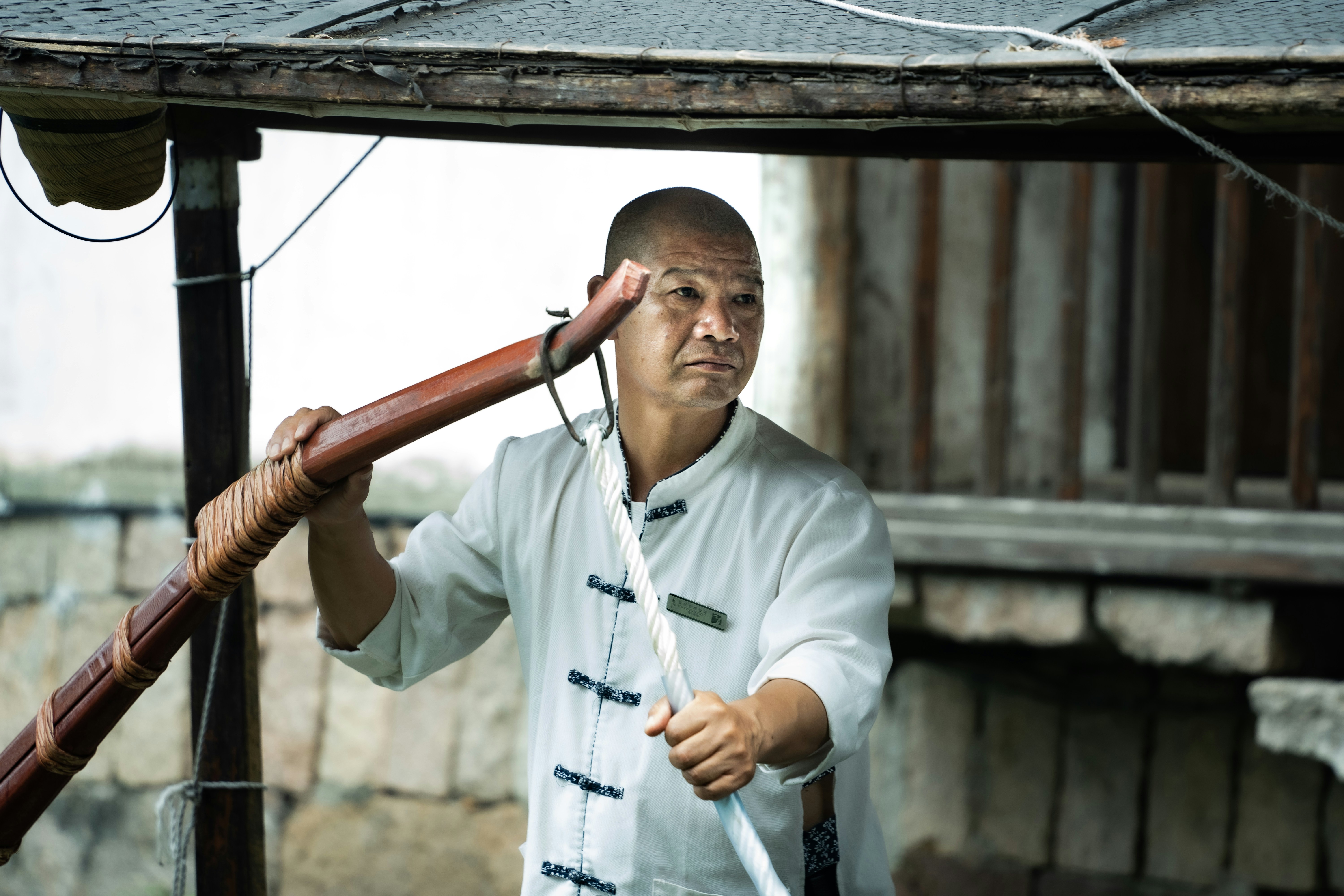Mental strength is a fundamental component in the practice of Wing Chun, a traditional Chinese martial art known for its efficiency and directness.
Unlike physical prowess alone, mental fortitude encompasses a range of psychological facets that are crucial for handling dangerous situations effectively.
This aspect of training is pivotal, as it enables practitioners to maintain focus, resilience, and calmness under pressure, which are all essential qualities in any confrontational scenario.
In Wing Chun, the mind and body work in unison.
The mental discipline developed through consistent training helps practitioners to stay composed and make quick, rational decisions even in high-stress environments.
This mental resilience is not just about withstanding physical attacks but also about managing fear, anxiety, and the adrenaline rush that accompanies dangerous encounters.
By cultivating a strong mental foundation, Wing Chun practitioners can enhance their overall effectiveness in both defensive and aggressive maneuvers.
Focus is another critical element of mental strength in Wing Chun.
The ability to concentrate on the task at hand, block out distractions, and remain fully present is honed through repetitive drills and forms.
This heightened sense of awareness allows practitioners to anticipate an opponent’s moves and respond with precision and agility.
Furthermore, the meditative aspects of Wing Chun encourage a calm, centered mind, which is invaluable in maintaining control during a confrontation.
Resilience, or the capacity to recover quickly from setbacks, is also a key psychological trait developed through Wing Chun training.
Practitioners learn to view each challenge as an opportunity for growth, building a mindset that is adaptable and unyielding.
This mental toughness ensures that they do not falter when faced with adversity, whether it be a physical confrontation or a personal struggle.
In essence, mental strength in Wing Chun is about achieving a balanced state where the mind can guide the body with clarity and confidence.
Through dedicated practice, Wing Chun practitioners can harness this inner strength to navigate and overcome dangerous situations with poise and effectiveness.
Understanding the Connection Between Mind and Body

The practice of Wing Chun is inherently a holistic discipline that emphasizes the seamless integration of mind and body.
This interconnectedness is essential for practitioners aiming to enhance their mental strength, especially in dangerous situations.
Physical training in Wing Chun is not merely about mastering techniques but also about cultivating a focused and resilient mindset that can effectively handle stress and adversity.
One of the fundamental principles in Wing Chun is “Chi Sau” or “Sticky Hands.”
This exercise requires practitioners to maintain constant contact with their opponent’s arms, fostering a heightened sense of awareness and tactile sensitivity.
The mental focus required in Chi Sau is immense, as it demands the practitioner to remain calm, adaptable, and attentive to subtle changes in pressure and movement.
This exercise exemplifies how physical training in Wing Chun directly contributes to enhancing mental fortitude.
Moreover, techniques such as “Centerline Theory” emphasize the importance of maintaining equilibrium and control.
The mental discipline needed to adhere to this principle, especially under the pressure of a real confrontation, underscores the symbiotic relationship between mind and body.
Practitioners must consistently train their minds to stay centered and composed, enhancing their ability to execute precise movements and maintain defensive integrity.
Another key aspect is the practice of “Sil Lim Tao,” the foundational form in Wing Chun.
This form is not just a set of physical movements but a meditative practice that cultivates mental clarity and focus.
By regularly practicing Sil Lim Tao, practitioners develop a heightened sense of internal awareness and mental resilience.
This mental conditioning is crucial in dangerous situations, as it enables practitioners to remain calm and make strategic decisions under pressure.
In summary, the connection between mind and body in Wing Chun is integral to developing mental strength.
Through rigorous physical training and focused mental exercises, practitioners can enhance their ability to handle dangerous situations with composure and precision.
The deliberate practice of techniques like Chi Sau, adherence to principles like Centerline Theory, and the meditative aspects of forms like Sil Lim Tao exemplify how Wing Chun fosters a robust symbiosis between the mind and body.
Mindfulness and Meditation Techniques
Mindfulness and meditation are invaluable tools for Wing Chun practitioners aiming to enhance their mental strength, particularly in dangerous situations.
One of the most effective methods is focused breathing.
This technique involves taking slow, deep breaths, concentrating on each inhalation and exhalation.
By directing attention to the breath, practitioners can achieve a state of calmness and heightened awareness, allowing them to respond more effectively to immediate threats.
Visualization is another powerful technique. Practitioners can close their eyes and vividly imagine scenarios where they successfully navigate through dangerous encounters.

This mental rehearsal builds confidence and prepares the mind for real-life situations.
Visualization not only enhances mental preparedness but also reinforces positive outcomes.
making it easier to execute precise movements and strategies when faced with actual danger.
Body scanning is a technique that promotes a deeper connection between the mind and body.
Practitioners systematically focus on different parts of their body, from head to toe, acknowledging sensations without judgment.
This practice fosters a heightened sense of bodily awareness, crucial for Wing Chun, where every movement and posture is vital.
By regularly engaging in body scanning, practitioners can quickly identify and release physical tension, maintaining optimal performance during high-stress situations.
Incorporating these mindfulness and meditation techniques into regular training can significantly enhance a Wing Chun practitioner’s mental resilience.
Focused breathing, visualization, and body scanning each contribute uniquely to building a calmer, more centered mind.
This mental fortitude is essential for effectively managing the stress and unpredictability of dangerous situations.
allowing practitioners to remain composed and make quick, precise decisions when it matters most.
Developing Situational Awareness

Situational awareness is a critical skill for Wing Chun practitioners, as it directly impacts their ability to respond effectively in dangerous situations.
By honing this skill, practitioners can significantly enhance their mental strength and readiness.
Situational awareness involves the continuous observation of one’s surroundings.
the identification of potential threats, and the maintenance of a heightened state of alertness.
This proactive approach can prevent or mitigate danger before it escalates.
One effective strategy for developing situational awareness is to practice mindfulness.
This involves being fully present in the moment and paying close attention to the environment.
Practitioners should make a habit of scanning their surroundings, noting any unusual or suspicious activity.
This constant vigilance helps to identify threats early, providing valuable time to react appropriately.
Understanding the context of one’s environment is also crucial.
For example, a crowded subway station will present different challenges and threats compared to a quiet park.
By tailoring their awareness to the specific environment, practitioners can better anticipate and address potential dangers.
Additionally, practicing scenario-based training can be beneficial.
This involves imagining various dangerous situations and mentally rehearsing how to respond.
Such exercises help to cement a quick and effective reaction in real-life scenarios.
Real-life examples underscore the importance of situational awareness.
Consider a Wing Chun practitioner who notices a person acting erratically in a busy marketplace.
By staying alert and keeping a safe distance, the practitioner can avoid a potentially dangerous encounter.
Another example is a practitioner who recognizes the signs of a brewing conflict in a bar.
By positioning themselves near an exit and remaining vigilant, they are prepared to leave swiftly if the situation escalates.
Incorporating these strategies into daily practice helps Wing Chun practitioners enhance their situational awareness.
ultimately strengthening their mental fortitude.
By staying alert and prepared, they can navigate dangerous situations with confidence and composure.
Building 🏫 Resilience Through Adversity
Resilience, the ability to recover quickly from difficulties, is a cornerstone of mental strength.
For Wing Chun practitioners, resilience is not merely an abstract concept but a developed competence honed through rigorous training.
The essence of Wing Chun lies in its capacity to prepare individuals for both physical confrontations and the mental tolls that accompany them.
Training sessions in Wing Chun often simulate high-pressure scenarios.
pushing practitioners beyond their comfort zones.
By consistently facing and overcoming these challenges, individuals cultivate a robust mental framework.
This process involves confronting fears, managing stress.
and maintaining composure under duress.
For instance, during sparring exercises.
practitioners must make split-second decisions while under physical and mental pressure.
Such experiences foster a resilience that extends beyond the dojo.
Consider the experience of Sarah, a dedicated Wing Chun student.
During a late-night commute, she found herself in a potentially dangerous situation.
Drawing upon her training, Sarah maintained her calm and assessed her surroundings.
enabling her to de-escalate the situation without resorting to violence.
Her ability to stay composed and think clearly was a direct result of the mental resilience she developed through Wing Chun.
Similarly, James, a long-time practitioner, recalls an incident where his mental fortitude was tested outside the martial arts context.
Faced with a high-stakes business negotiation, James utilized the focus and resilience he had honed during countless hours of Wing Chun practice.
By staying grounded and composed, he successfully navigated the stressful situation, achieving a favorable outcome.
These anecdotes underscore the profound impact that Wing Chun training can have on mental resilience.

The regular exposure to adversity, coupled with the supportive environment of the dojo, equips practitioners with the tools needed to handle real-world stressors effectively.
Through consistent practice, Wing Chun practitioners not only enhance their physical capabilities but also build the mental strength necessary to face life’s challenges head-on.
Techniques for Managing Fear and Anxiety
Managing fear and anxiety is crucial for Wing Chun practitioners, especially when preparing for dangerous situations.
The first technique to consider is controlled breathing.
Controlled breathing helps regulate the nervous system, reducing the body’s fight-or-flight response.
Practitioners can use methods such as deep diaphragmatic breathing, where they inhale slowly through the nose, hold the breath briefly.
and then exhale slowly through the mouth.
This simple yet effective technique can significantly lower stress levels and improve focus during high-pressure scenarios.

Positive self-talk is another essential method for managing fear and anxiety.
This involves consciously replacing negative thoughts with positive affirmations.
Instead of dwelling on potential failures.
practitioners can remind themselves of their training and capabilities, reinforcing a sense of confidence and preparedness.
Consistent positive self-talk can foster a resilient mindset.
enabling practitioners to remain calm and composed when facing danger.
Mental rehearsal is a powerful tool that involves visualizing successful outcomes in various scenarios.
By mentally practicing responses to potential threats, Wing Chun practitioners can create a mental blueprint for action.
This technique not only builds confidence but also enhances the brain’s ability to respond effectively under stress.
Visualization should be detailed, incorporating sights, sounds, and physical sensations to make the mental practice as realistic as possible.
Consistent practice of these techniques is vital in reducing fear responses.
Regularly engaging in controlled breathing, positive self-talk, and mental rehearsal can rewire the brain to handle stress more effectively.
Over time, these practices become second nature.
empowering practitioners to maintain mental strength and clarity even in the most dangerous situations.
By integrating these methods into their routine.
Wing Chun practitioners can enhance their mental fortitude, ensuring they are better equipped to handle the challenges they may face.
The Role of Discipline and Routine
Maintaining a disciplined training routine is fundamental for Wing Chun practitioners aiming to enhance their mental strength for dangerous situations.
The consistent practice not only fortifies physical skills but also cultivates mental endurance, a critical component in high-stress scenarios.
By adhering to a well-structured training schedule, practitioners can develop a robust mental framework that supports quick decision-making and calmness under pressure.
The benefits of consistency in training routines are manifold.
Regular practice ensures steady progress, allowing practitioners to refine their techniques and internalize movements so that they become second nature.
This habitual mastery translates into confidence, a key element in maintaining composure during confrontations.
Furthermore, the repetitive nature of disciplined training ingrains a strong work ethic, fostering the perseverance needed to push through physical and mental barriers.
Building mental endurance through routine practice is another significant advantage.
Regularly engaging in challenging training sessions conditions the mind to withstand stress and fatigue.
This mental resilience is essential when facing real-world threats, as it enables practitioners to remain focused and effective even in the face of adversity.
The mental toughness acquired through disciplined routine helps practitioners manage fear and anxiety.
transforming them into assets rather than hindrances.
To establish and stick to an effective training schedule.
it is crucial to set realistic and attainable goals.
Begin by identifying specific areas for improvement and allocate dedicated time slots for focused practice.
Consistency is key; therefore, it is advisable to integrate training sessions into daily routines.
making them as habitual as any other essential activity.
Additionally, tracking progress can provide motivation and a sense of accomplishment, further reinforcing the commitment to the training regimen.
Incorporating variety within the routine can also prevent monotony and keep the practice engaging.
Alternating between different drills, sparring sessions.
and mental exercises ensures a well-rounded development and keeps the mind stimulated.
Seeking the guidance of experienced instructors can provide valuable insights and help tailor a routine that aligns with personal goals and capabilities.
Applying Mental Strength in Real-World Scenarios
Wing Chun practitioners often find that the mental fortitude developed through their training proves invaluable in real-world dangerous situations.
By honing their mental strength, they become better equipped to handle high-stress environments and make quick, effective decisions.
This section delves into how these practitioners utilize their mental and physical training to navigate and survive threats.

Consider the case study of a Wing Chun practitioner who found herself in a potentially life-threatening situation.
One evening, while walking home, she encountered an aggressive individual intent on causing harm.
Leveraging her Wing Chun training, she was able to maintain a calm and composed demeanor, which is crucial in such scenarios.
Her mental conditioning allowed her to assess the situation quickly, identify potential escape routes, and prepare for physical engagement if necessary.
Ultimately, she managed to de-escalate the confrontation using both verbal and non-verbal cues learned during her Wing Chun practice.
In another instance, a male practitioner faced multiple attackers in a secluded area.
His extensive training in Wing Chun’s principles of efficiency and directness enabled him to defend himself effectively.
The mental strength he had cultivated allowed him to stay focused under pressure, anticipate the attackers’ moves, and respond with precise, controlled techniques.
This mental resilience was pivotal in ensuring his safety until help arrived.
These examples highlight the critical role of mental strength in real-world applications.
However, achieving such mental fortitude is not a one-time effort; it requires continuous practice and mental conditioning.
Wing Chun practitioners must regularly engage in scenarios that challenge their mental and emotional limits.
thereby enhancing their ability to remain calm and effective in dangerous situations.
Ongoing training sessions, mental exercises, and even meditation can significantly contribute to this mental resilience.
In a rapidly changing world, the ability to stay mentally strong and composed can be the difference between life and death.
For Wing Chun practitioners, the journey towards enhancing mental strength is a lifelong commitment that extends far beyond the martial arts studio.



